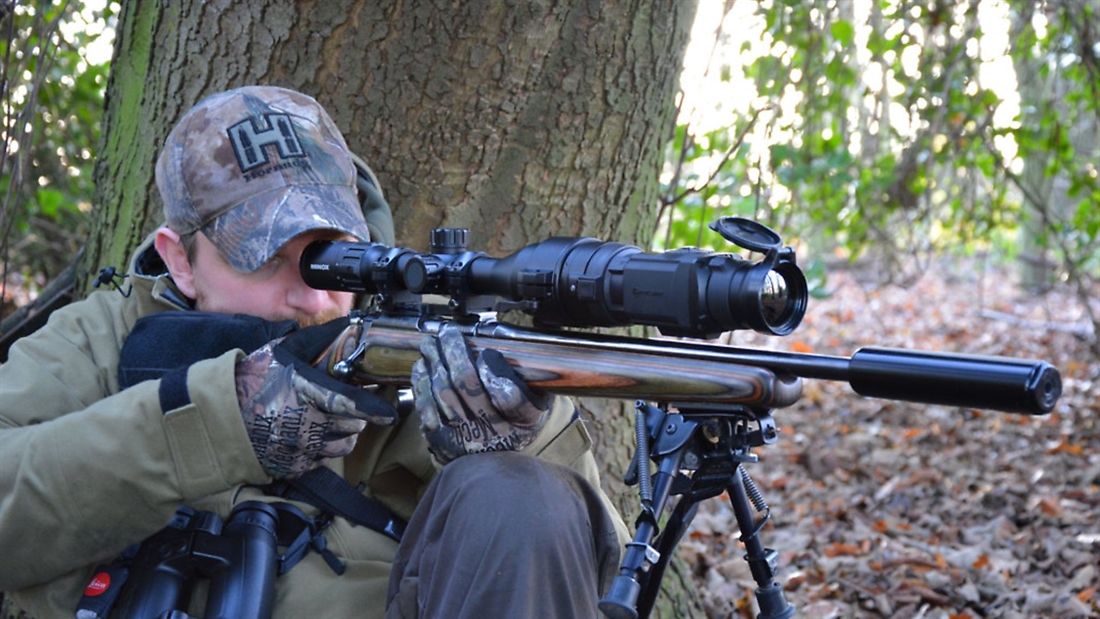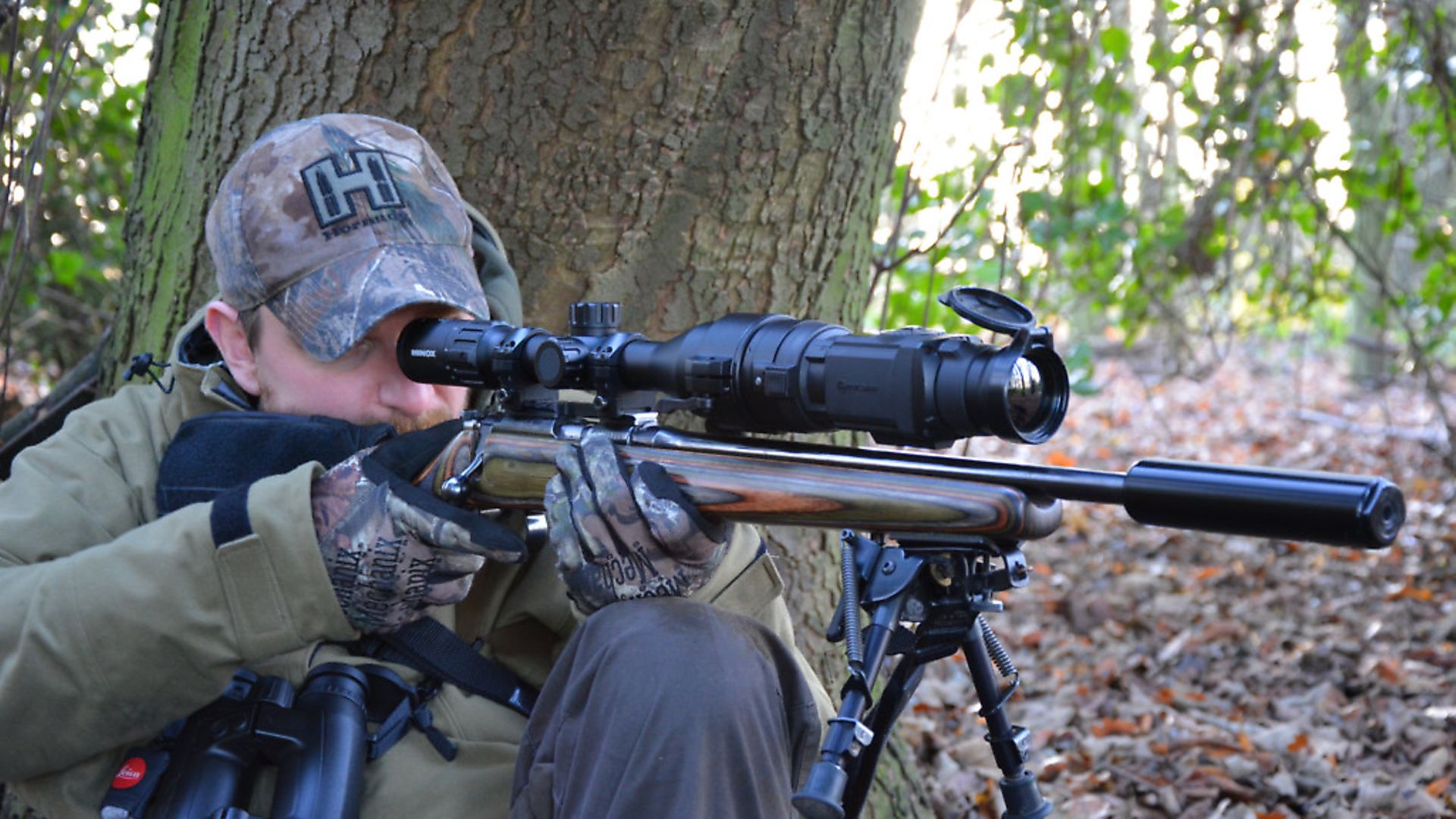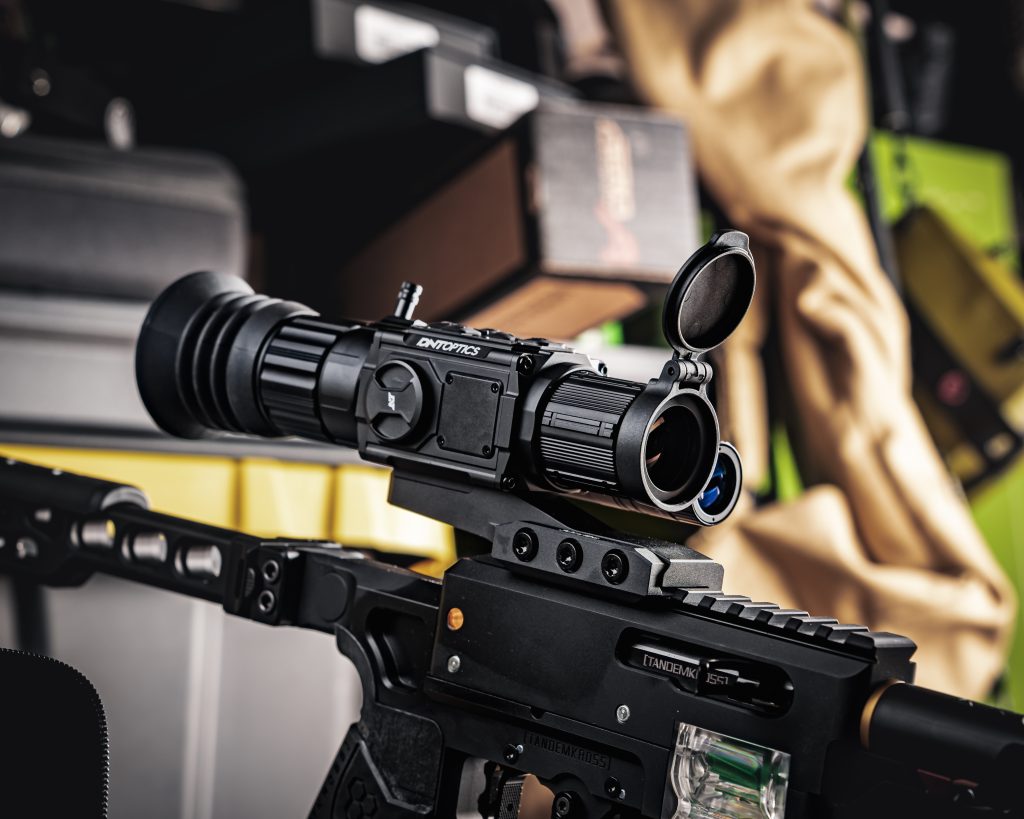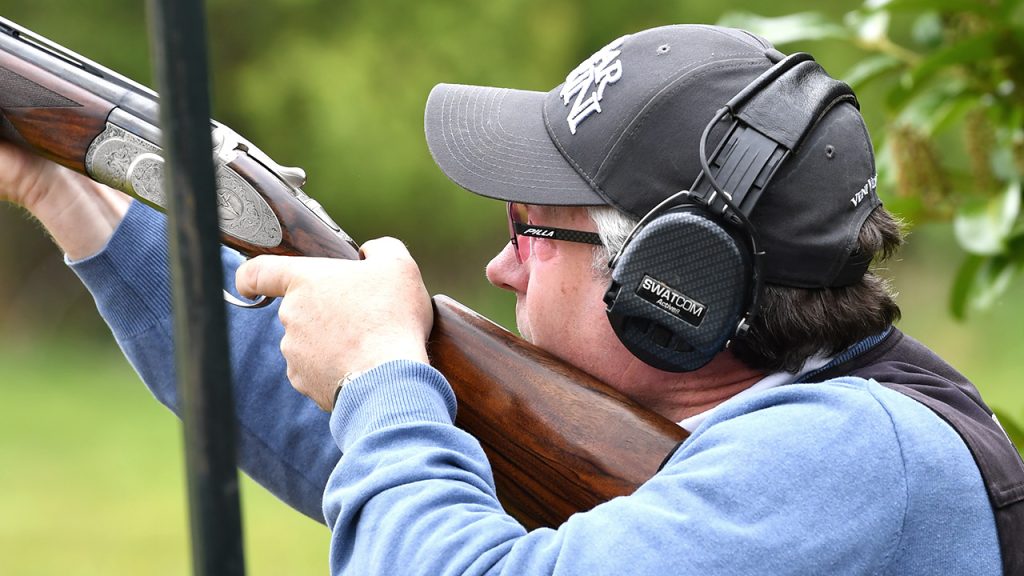Pulsar core FXD50 – in depth test and review

Chris Parkin puts the Pulsar core FXD50 to the test – it’s a flexible thermal imaging solution that can be part spotter, and also transform your day scope into a night eater
LIKES
Not just a Jack of all trades
Keep your day scope’s ergonomics and chosen reticle
Retains the well-practised shooting position and its muscle memory
I felt I was retaining more natural night vision and spacial awareness
DISLIKES
Be very wary of scope/mounts and movement
It’s a long reach to the controls way out over your rifle’s forend
OVERALL
I liked the core for use in either of its formats, especially as a riflescope addition giving superb night shooting capability but given the fact scope mounting is the Achilles heel of the rifle’s setup for many, I would make sure you thoroughly understand the mounting procedure and keep a close watch for any movement which at the scope may only be minute, but very apparent on target. Superb for shooters with multiple rifles and hunting styles
PRICES
£3,399.95
Extra scope mounting kit,
£99.99
5×30 Monocular add-odd,
£79.95
CONTACT
www.scottcountry.co.uk 01556 503587
ALSO USED
Minox ZX5i 2-10×50 riflescope with #4 reticle
Price
RRP £679.99
Contact
MINOX, 01494 481004 or via www.minox.com for further information
IN DEPTH REVIEW
The Pulsar Core FXD50 is a tool to give you the best of both worlds. It is a handheld thermal imager for scanning while hunting, and is capable of being fastened to a regular daylight riflescope and used as a thermal imaging night sight. The compact handheld spotter has a front focus adjustment from 3m to infinity with a rear ocular fast-focus rubber-shrouded eyepiece to suit all eyesight users.
As standard, the 50mm focal length lens has capability for a 2x internal zoom adjustment displaying a single-colour palate green scale thermal picture capable of detection of a man-sized object to 1,250m. Everything is powered by two CR123 batteries that have given me about four hours’ solid runtime. Four buttons on the top control the simple screen menus for automatic or manual screen refresh; rock, woodland or identification modes; and time/date set-up, etc. Further functions control the zeroing functions of the monocular (more on that later).
Each Core is delivered with a 50 or 56mm scope mounting kit. These are available as extras at £99.99 if you want multiple rifles ready to mount up to and are supplied with a series of shims to match the exact outer diameter of your regular day scope. I mounted the Core on a 2-10×50 Minox ZX5i scope, which suits the lower magnification range Pulsar suggests mating the Core with. Fitting takes less than five minutes with an adjustable quick-release lever to complete final tightening onto the scope (which has remained totally undamaged throughout testing). An Allen bolt will fine-tune the exact tension for the diameter you apply the Core to. It’s recommended that you degrease the scope body and corresponding inner surfaces of the adaptor to aid grip and, personally, I’d also put a small witness mark on both the scope’s objective body and the Core’s adapter, to assure yourself no rotation has occurred when you remove and re-fit the thermal in the future. Belt and braces to my mind!
Swapping from spotter to mounting on a riflescope entails removing the eyepiece from the Core with a partial turn of the bayonet coupling and then replacing it with the sprung bayonet ‘male’ adapter for the scope’s ‘female’ fitting. The monocular will then slot into the scope adapter and when given a very firm turn, click into place on the intentionally tight bayonet pins that both support the Core’s weight and precise zeroed position, during recoil. This mating-up procedure takes about 15-30 seconds with practise, but here is my first serious comment: make very sure your scope and its mounting system is very secure, no wimpy scope rings and bits of elevation packing! Clicking the Core in and out of the scope adapter is quite physical and if anything is moving, you will lose zero in a heartbeat so be aware. My scope mounting systems are very well tested, for my own peace of mind, and I deliberately spent half an hour taking the Core on and off while checking and re-testing any zeroing shift. My scope and mounts stayed in place but the aluminium scope adapter ring, which is fastened onto the objective, did turn, and had I tightened it any more it would have permanently marked my scope. Long term, I would use a light thread-locking compound that will disassemble with mild heat application, and hence the witness marks to show any movement before it causes a problem – be aware and prepare, your perseverance will be rewarded.
The high resolution 640×48 pixel display on the green sapphire OLED internal screen feeds from a 384×488 Microbolometer sensor with 50Hz refresh rate for smooth movement. A 42mm objective lens allows a decent field of view accompanied with wide-angle eyepiece set-up for 2.8x magnification when used as a spotter (up to 5.6x with digitally doubled zoom) and a straight 1x when mounted to the scope. Here, I found 3-5x zoom ideal with six to 10 possible but with a definite loss of quality, although still usable in the right circumstances. Having your own personal reticle in the riflescope is great as it will remain fine against the thermal display whose wide-angle image robs nothing from your usual field of view. You can still use illumination if you find it helps to identify reticle position although black reticles stand out clearly, regardless of weighting, against the green image display.
You need to zero the Core when placed onto the riflescope. This is done with a fairly straightforward menu function to project an ‘X’ on screen which you can scroll like a cursor until it coincides precisely with the riflescope’s reticle position – just hold down the button to store this and you are ready to go. This can in fact be relied upon without a single shot fired, but I still always check with a 100mm steel gong with a handwarmer pouch taped to the back to create a thermal target ‘dot’.
The reach to the buttons on top of the Core is quite stretched. A remote is supplied although it doesn’t have any kind of tag or lanyard. At 50mm long and black, it will get lost if not fastened to something securely in the dark – you all know what I mean!
No external power port or video-out connection is provided but I liked the KISS (Keep It Simple, Stupid) principle and having a spare set of CR123s in your pocket is no hassle. The screw-capped lid to the left is easily accessible and it takes seconds to change batteries with no irritating wires dangling around. The waterproofing gives a great sense of confidence as getting items wet is par for the course when hunting – just be wary of getting water on any exposed lenses when the unit is partially disassembled during mode changeovers. It won’t cause damage but condensation will interrupt image quality.
I mounted the FXD on my .22 rimfire because I wanted to get the most use from it and opportunities to test the take on/off zero retention of the mounting stability. It paid dividends to persevere with a really neat, tidy set-up; everything was degreased and I did threadlock it in the end, which made it 99.9% repeatable. The bayonet fitting is necessarily firm to keep the monocular and scope adapter in perfect angular unison to retain zero set-up and it did. I was happily shooting 80-90m rabbits with it and enjoyed retaining my regular shooting positions and eye relief without a rubberised eyecup. These often allow heat from your face to mist up lenses when you are positioned on them for a long time, and of course recoil/eye relief is as normal in the daytime. Rabbits at 90m versus foxes at longer range are a clear comparison, and with good thermal signatures available beyond 400m in short winter crops, I was impressed. Although the multiple colour palettes on stand-alone thermal kit can assist with identification, there is a lot to be said for fuss-free resolution and 50Hz refresh rate giving a clear picture of an animal’s movement patterns and gait; quickly separating rabbits from hares is a regular task on some of my land. For a multi season/style/quarry/rifle hunter, having the Core stashed in your pocket when woodland stalking for use as a spotter in daylight or dusk and dawn is ideal, with the added bonus of being able to transfer over to a rifle at other times when controlling vermin at night. I see that as the Core’s fundamental benefit because I would personally not like to take it on and off a rifle, going back and forth between monocular and riflescope when out after dark. I’d set it up as the rifle sight, check it before I venture out and leave it alone.
Continued use has built confidence in the mounting system, and on rifles with Picatinny rails (for the foundations or scope mounting) assured mount strength with quality rings is always better than 11mm dovetails on a rimfire. On that topic, as a thermal spotter it is very handy, more so in my opinion than the XQ38 or 50s. It is slightly less capable in direct comparison but the option of use as a rifle sight is undeniably empowering and makes up for this slight disadvantage. The smaller dimension as a pure spotter also makes it desirable when carrying binoculars as well; the XQ is a little big for a pocket but the Core slips into one easily.
I did a little conventional lamping before Christmas and was reminded how delightfully fine daylight optics’ reticles are when placing shots precisely. Using a daylight optic with your chosen reticle is more reminiscent of this as you are limited on any digital kit by the resolution/subtension of a single pixel for any displayed reticle dimension. Of course, on the Core, you have the etched glass reticle of your daytime optic to appreciate, which is a fact to consider. I feel ergonomics are improved with conventional eye relief and a physical space between your eye and your sight, too. This makes hunting in darkness far more relaxed in that you keep so much more of your natural spatial awareness with your ‘off eye’ remaining open and perhaps not quite losing as much night vision as digital NV seems to steal from you. Screen brightness along with contrast are readily varied to better define the image to your preferences and keep it as dim as possible, with only small items highlighted because they are hot against a sea of darkness, which is less tiring on your eye. There is nothing worse than having one eye totally different to the other because the pupil has been crashed tightly shut by the bright image within a rubber eyecup.
Related Articles
Get the latest news delivered direct to your door
Subscribe to Rifle Shooter
Elevate your shooting experience with a subscription to Rifle Shooter magazine, the UK’s premier publication for dedicated rifle enthusiasts.
Whether you’re a seasoned shot or new to the sport, Rifle Shooter delivers expert insights, in-depth gear reviews and invaluable techniques to enhance your skills. Each bi-monthly issue brings you the latest in deer stalking, foxing, long-range shooting, and international hunting adventures, all crafted by leading experts from Britain and around the world.
By subscribing, you’ll not only save on the retail price but also gain exclusive access to £2 million Public Liability Insurance, covering recreational and professional use of shotguns, rifles, and airguns.
Don’t miss out on the opportunity to join a community of passionate shooters and stay at the forefront of rifle technology and technique.





